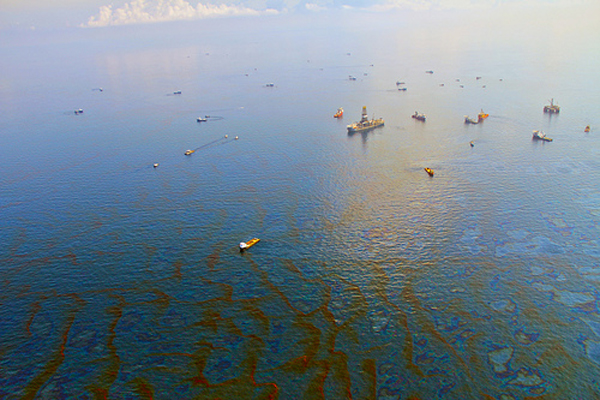- South Texas Students Meet Accordion Music Icons Los Tigres Del Norte In Edinburg Thanks To Khs America/Hohner Alianza Académica Initiative
- Fragile Planet Offers a Nighttime Wildlife Experience
- Falcons Soccer Off & Running
- Cameron County Receives Funds to Improve Two Parks
- Falcons Complete First Half of 32-6A
- School District to Help out Victims of California Wildfires
- Sand Castle Days Continued Despite Unexpected Weather
- Ready for District
- Discussion of Garbage Dumpster Rates, Agreements Between State & City on Highway Regulations, and More
- 31st Annual Shrimp Cook-Off is Right Around the Corner
Deepwater Horizon Trial Resumes with Spill Amount Disputed
- Updated: October 11, 2013
by John Michaelson/TNS
AUSTIN, Texas – The second phase of the trial over the Deepwater Horizon oil spill disaster in the Gulf of Mexico is in progress. This portion will include an attempt to determine just how much oil was spilled following the explosion and fire in 2010.
According to Sara Gonzalez-Rothi Kronenthal, senior policy specialist, gulf and coastal restoration, for the National Wildlife Federation, estimates vary since there were no images of the damaged wellhead made public for days.
“So scientists didn’t have the best tools necessary to estimate,” she said, adding: “And even at four days after the explosion, there are internal BP emails that show that BP’s own engineer estimated that the flow was substantially larger than what BP was saying publicly.”

Day 30 of Deepwater Horizon oil spill in the Gulf of Mexico, 2010. Photo: Green Fire Productions/TNS
BP said the spill was less than 2.5 million barrels, while other estimates put the oil spill at more than 4 million. The figure is key in the case, as fines against BP would be levied by the barrel lost, and the fine per barrel depends on the degree of negligence.
This phase of the trial also will look at whether BP failed to immediately disclose the magnitude of the spill, which Kronenthal said led to lost time as those first efforts to cap the well were misplaced.
“In addition, BP was not prepared for a worst-case scenario from this particular rig, which oil companies are supposed to be prepared for a worst-case discharge,” she specified. “They’re supposed to have that written in their plans for their permit before they drill.”
While the spill happened more than three years ago, Kronenthal said a new study shows that wildlife in the Gulf still is being affected.
“It indicates that the deep-sea impacts in what’s called the benthic layer are really widespread, and it could take decades for the deep-sea environment to recover,” she said.
To help with the recovery, 80 percent of the Clean Water Act fines levied against BP will be sent back to the region to help with restoration.
More information is at 1.usa.gov/1bmyl4E.
